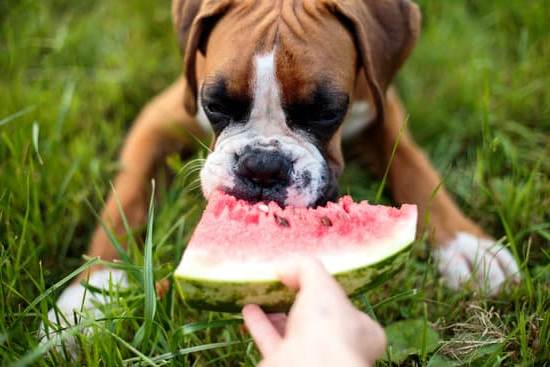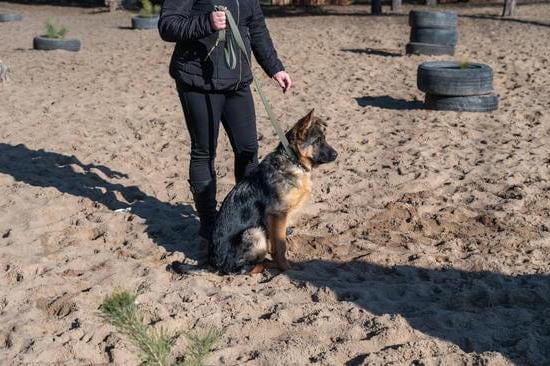Are you wondering how to best train a dog? Training your furry friend is essential for their well-being and your peace of mind. In this article, we will explore the importance of training your dog and provide helpful tips and techniques to ensure successful training. From basic commands to addressing problematic behaviors, we’ll cover it all to help you build a strong and positive relationship with your canine companion.
Training your dog is not just about teaching them tricks; it’s about establishing boundaries, communication, and fostering a harmonious coexistence. By understanding the significance of training, you can better appreciate the impact it has on your dog’s behavior and overall quality of life. Whether you have a new puppy or an older dog, proper training is crucial for their physical, mental, and emotional well-being.
In the following sections, we will discuss the different methods of training based on your dog’s personality and breed, as well as the essential commands every dog should know. We’ll also delve into the importance of positive reinforcement, consistency in training, addressing problematic behaviors, and advanced training techniques. Stay tuned for valuable insights on how to best train your dog.
Choosing the Right Training Method for Your Dog’s Personality and Breed
When it comes to training your dog, it’s essential to choose the right training method that will best suit your furry friend’s personality and breed. Each dog is unique, and what works for one may not work for another. There are several different training methods available, so it’s crucial to understand which one will be most effective for your specific dog.
Here are a few factors to consider when choosing the right training method for your dog:
- Personality: Is your dog energetic and eager to please, or more laid back and independent? Understanding your dog’s personality can help you determine whether they will respond better to positive reinforcement, clicker training, or a more traditional obedience approach.
- Breed: Different breeds have different tendencies and characteristics. For example, herding breeds may require specialized training techniques to address their natural instincts. Understanding the traits of your dog’s breed can guide you in selecting the most appropriate training method.
- Training Goals: What are you hoping to accomplish with your dog’s training? Are you looking to teach basic obedience commands, address problematic behaviors, or engage in advanced training activities like agility or trick training? The goals you have for your dog’s training can influence which method will be most effective.
By considering these factors, you can determine how to best train a dog based on their individual needs and characteristics. It’s important to remember that patience and consistency are key elements in any successful training program. With the right approach tailored to your dog, you’ll be on the path to a well-behaved and happy canine companion.
Basic Commands
Understanding the Basics
Training your dog to obey basic commands such as sit, stay, come, and lay down is essential for their safety and well-being. These commands form the foundation of a well-behaved and obedient pet. Teaching your dog these basic commands not only makes it easier to manage their behavior but also strengthens the bond between you and your furry friend.
Using Positive Reinforcement
When teaching your dog basic commands, positive reinforcement is key. Using treats, toys, and praise to reward good behavior will motivate your dog to obey commands willingly. For example, when teaching your dog to sit, gently guide them into the sitting position and immediately reward them with a treat or verbal praise. Consistently rewarding your dog for following commands will reinforce their understanding of what is expected from them.
Practice Makes Perfect
Consistency is crucial when teaching your dog basic commands. It’s important to practice these commands regularly in various environments to ensure that your dog understands and obeys them in different situations. Introducing distractions gradually during training sessions will help your dog learn to focus and listen even when there are other stimuli around. With patience and persistence, you can effectively train your dog to master these basic commands.
Incorporating these training techniques into your routine will help you successfully teach your dog the foundational skills they need to be a well-mannered pet. By understanding how different dogs respond best to various methods and being consistent in practicing these techniques, you can effectively train your furry companion in no time.
Positive Reinforcement
When it comes to training your dog, positive reinforcement is one of the most effective methods for encouraging good behavior. By using treats, toys, and praise, you can create an environment that promotes learning and encourages your dog to repeat desirable actions. This section will explore the benefits of positive reinforcement as well as provide some tips on how to best utilize this training method.
The Benefits of Positive Reinforcement
Positive reinforcement is a powerful tool for shaping your dog’s behavior because it focuses on rewarding desirable actions rather than punishing undesirable ones. When you use treats, toys, or praise to reinforce good behavior, you are effectively teaching your dog what you want them to do. This creates a positive association with certain behaviors, making it more likely that they will be repeated in the future.
Using Treats and Toys Effectively
When using treats and toys as rewards for good behavior, it’s important to choose items that are highly motivating for your dog. Select treats that are small, bite-sized, and delicious to ensure that they have a strong appeal. Similarly, choose toys that your dog finds engaging and stimulating. By using high-value rewards, you can effectively capture your dog’s attention and motivate them to learn.
Providing Praise and Affection
In addition to treats and toys, verbal praise and affection can also be powerful forms of positive reinforcement. When your dog successfully follows a command or exhibits good behavior, make sure to shower them with enthusiastic praise and physical affection.
This reinforces the idea that they have done something right and strengthens the bond between you and your pet. Remember to deliver praise immediately after the desired behavior is exhibited so that your dog can make the connection between their actions and the positive feedback they receive.
Positive reinforcement is an essential component of successful dog training. By understanding how to best utilize treats, toys, and praise in this process, you can effectively encourage good behavior in your furry friend while strengthening your relationship with them.
Consistency Is Key
Establishing a routine is essential when it comes to training your dog. Dogs thrive on predictability, so setting consistent feeding times, exercise routines, and training sessions will help them understand what is expected of them. Here are some tips on how to establish a routine for your dog:
- Set regular feeding times: Dogs should be fed at the same times each day to help regulate their digestive system and prevent accidents in the house.
- Stick to a consistent walking schedule: Take your dog for walks at the same time each day to provide them with exercise and mental stimulation.
- Schedule training sessions: Choose specific times of the day to work on obedience training, and stick to these times consistently.
In addition to establishing a routine, setting clear expectations for your dog is crucial for successful training. Dogs need to know what behaviors are expected of them and what is considered unacceptable. Here are some ways to set clear expectations for your dog:
- Use clear and consistent commands: Make sure everyone in the household uses the same commands for desired behaviors, such as “sit” or “stay.”
- Be consistent with rules: If you don’t want your dog on the furniture, make sure this rule is enforced by everyone in the household.
- Provide boundaries: Use baby gates or crates to limit access to certain areas of the house if needed.
By establishing a routine and setting clear expectations, you can create a structured environment that will help your dog learn and thrive.
Remember that every dog is different, so it’s important to tailor your approach based on your dog’s individual personality and breed. Additionally, consistency in training methods will lead to better results over time. Understanding your dog’s needs and being patient during this process is key when determining how best train a dog.
Addressing Problematic Behaviors
When it comes to training a dog, addressing problematic behaviors is often one of the most challenging aspects for pet owners. Barking, digging, jumping, and aggression are common issues that need to be addressed in order to have a well-behaved and obedient pet. Understanding the root cause of these behaviors is essential in effectively training your dog.
One of the key factors in addressing problematic behaviors is understanding that these actions are often natural instincts for dogs. For example, barking and digging are ways that dogs communicate and release energy. Jumping can be a way for dogs to seek attention or show excitement. Aggression can stem from fear or feeling threatened. By understanding the underlying reasons for these behaviors, you can better address them with appropriate training techniques.
When addressing problematic behaviors in dog training, it is important to use positive reinforcement methods. This means rewarding your dog for good behavior rather than punishing them for bad behavior. Using treats, toys, and praise to encourage desirable actions will ultimately lead to more success in training your dog. Additionally, consistency is key when addressing these issues. Establishing clear expectations and maintaining a routine will help your dog understand what is acceptable behavior.
In order to address problematic behaviors effectively, it is important to be patient and persistent in your training efforts. It may take time for your dog to unlearn certain habits and develop new ones. By consistently working with your pet and using positive reinforcement techniques, you can help address problematic behaviors and create a well-behaved companion.
The Role of Patience and Persistence in Training Your Dog
Training a dog requires a lot of patience and persistence. Each dog is unique, so it’s important to understand that training will take time and consistent effort. The key to successful training is to remain patient and persistent throughout the process.
Patience is crucial when teaching your dog new commands or trying to correct problematic behaviors. It’s essential to remember that dogs do not understand human language, so they require repetition and time to grasp what is expected of them. Whether it’s learning to sit, stay, or come when called, your patience will be tested, but it’s important to remain calm and positive during the training process.
Persistence goes hand in hand with patience when training a dog. Consistently practicing commands and reinforcing good behavior is necessary for effective training. Dogs thrive on routine, so it’s important to reinforce the same commands and behaviors each day. This level of consistency will help your dog understand what is expected of them and lead to successful training outcomes.
When considering how to best train a dog, always keep in mind that patience and persistence are essential components of the process. By staying patient and consistently persistent with your efforts, you will be able to effectively train your dog and strengthen the bond between you both.
| Training Tips | Description |
|---|---|
| Be Patient | Repetition is key when teaching new commands. |
| Stay Persistent | Consistently practice commands and reinforce good behavior. |
Advanced Training Techniques
Once your dog has mastered the basic commands and has become a well-behaved pet, it may be time to consider advanced training techniques to further challenge and stimulate your furry friend. Advanced training techniques such as agility, obedience, and trick training can provide mental and physical exercise for your dog, strengthen the bond between you and your pet, and even open up opportunities for participating in competitions or shows.
Agility training involves teaching your dog to navigate through a series of obstacles such as tunnels, weave poles, jumps, and seesaws. This type of training not only provides physical exercise but also enhances your dog’s problem-solving skills. Obedience training focuses on advanced commands like heel, leave it, and fetch. It requires a high level of discipline from both the trainer and the dog but can result in a well-mannered companion with exceptional listening skills.
Trick training is a fun way to showcase your dog’s intelligence and creativity. From simple tricks like rolling over and playing dead to more complex routines such as dancing or fetching specific objects by name, trick training allows you to tap into your dog’s natural abilities and teach them entertaining behaviors that will impress friends and family alike.
If you’re wondering how to best train a dog beyond the basics, consider integrating one or more of these advanced techniques into your pet’s routine. With patience, consistency, and positive reinforcement, you can help your canine companion reach their full potential in terms of obedience and skill.
Conclusion
In conclusion, training your dog is an essential part of responsible pet ownership, and it’s important to find the right training method that suits your dog’s personality and breed. Whether you choose positive reinforcement, clicker training, or obedience classes, the key is to be patient, consistent, and persistent in your efforts.
Remember that every dog is unique, and what works for one may not work for another. Understanding your dog’s individual needs and preferences will help you determine how to best train a dog.
As you go through the process of training your dog, it’s crucial to remain consistent with your commands and expectations. Use positive reinforcement such as treats, toys, and praise to encourage good behavior and address problematic behaviors like barking or jumping. Additionally, establishing a routine will help reinforce the training and create a sense of stability for your dog. By setting clear boundaries and expectations, you can effectively communicate with your furry friend.
Finally, celebrate the progress and achievements of training your dog. Whether it’s mastering basic commands or excelling in advanced training techniques like agility or obedience, each milestone reached should be acknowledged and celebrated. Training a dog takes time, effort, and dedication but witnessing the transformation of an unruly pup into a well-behaved companion is truly rewarding.
Remember that the journey of training never really ends; continue to nurture and reinforce good behavior throughout your dog’s life. With patience and perseverance, you can build a strong bond with your pet while creating a harmonious environment at home.
Frequently Asked Questions
What Is the Most Effective Method of Dog Training?
The most effective method of dog training is positive reinforcement. This means rewarding good behavior with treats, praise, or toys. It helps to create a strong bond between the owner and the dog and encourages the dog to repeat the desired behavior.
What Are the 5 Golden Rules of Dog Training?
The 5 Golden Rules of Dog Training include being consistent, using positive reinforcement, being patient, setting realistic expectations, and providing proper exercise and mental stimulation for the dog. Consistency is key in reinforcing good behavior.
What Are the 7 Most Important Dog Commands?
The 7 most important dog commands are sit, stay, come, heel, down, leave it, and off. These commands are essential for controlling and managing a dog’s behavior in various situations such as walks, visits to the vet, or interactions with other people or animals.

Welcome to the blog! I am a professional dog trainer and have been working with dogs for many years. In this blog, I will be discussing various topics related to dog training, including tips, tricks, and advice. I hope you find this information helpful and informative. Thanks for reading!





